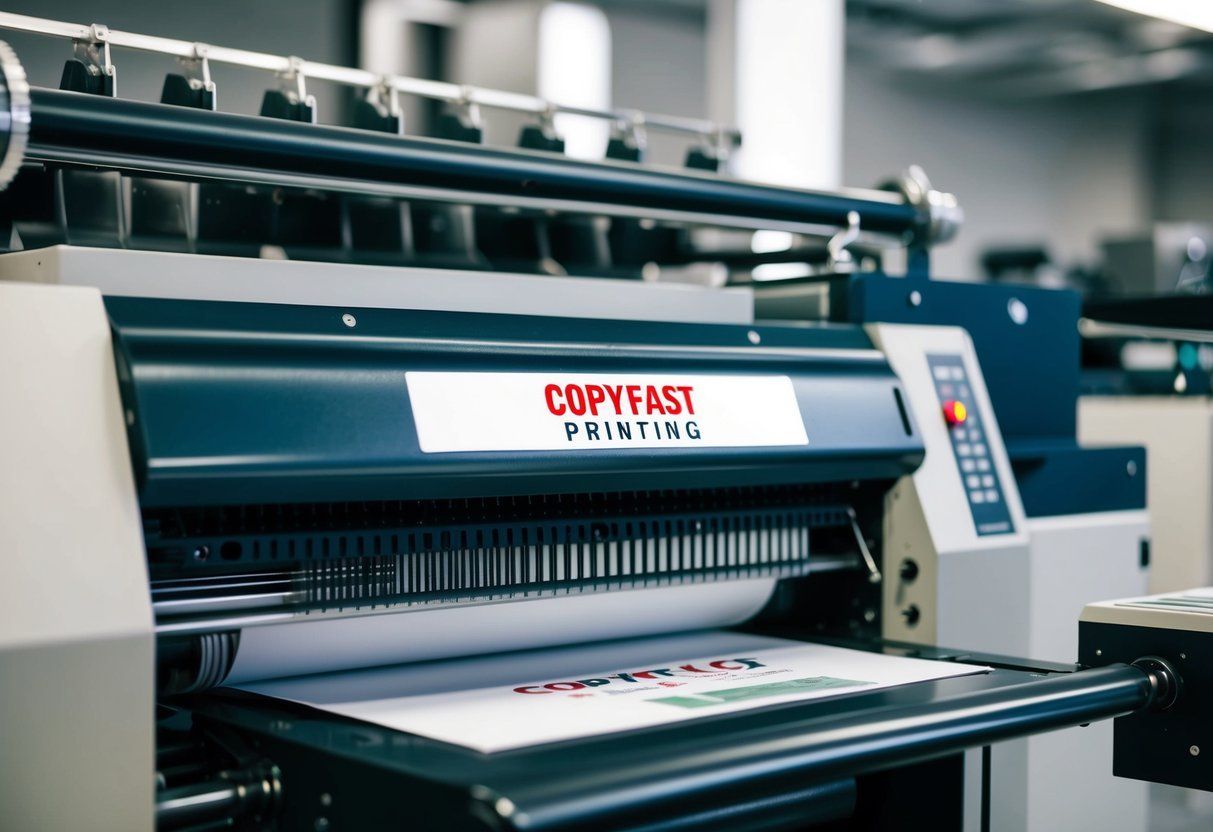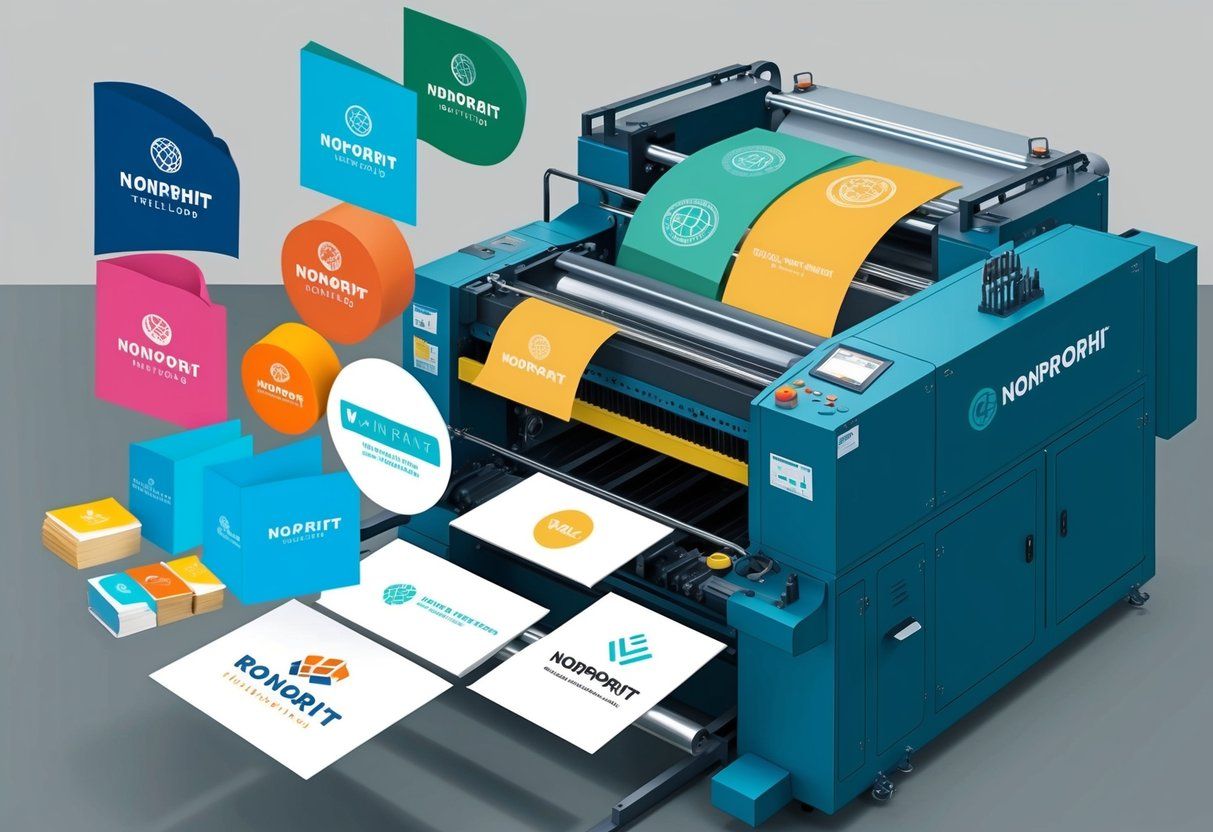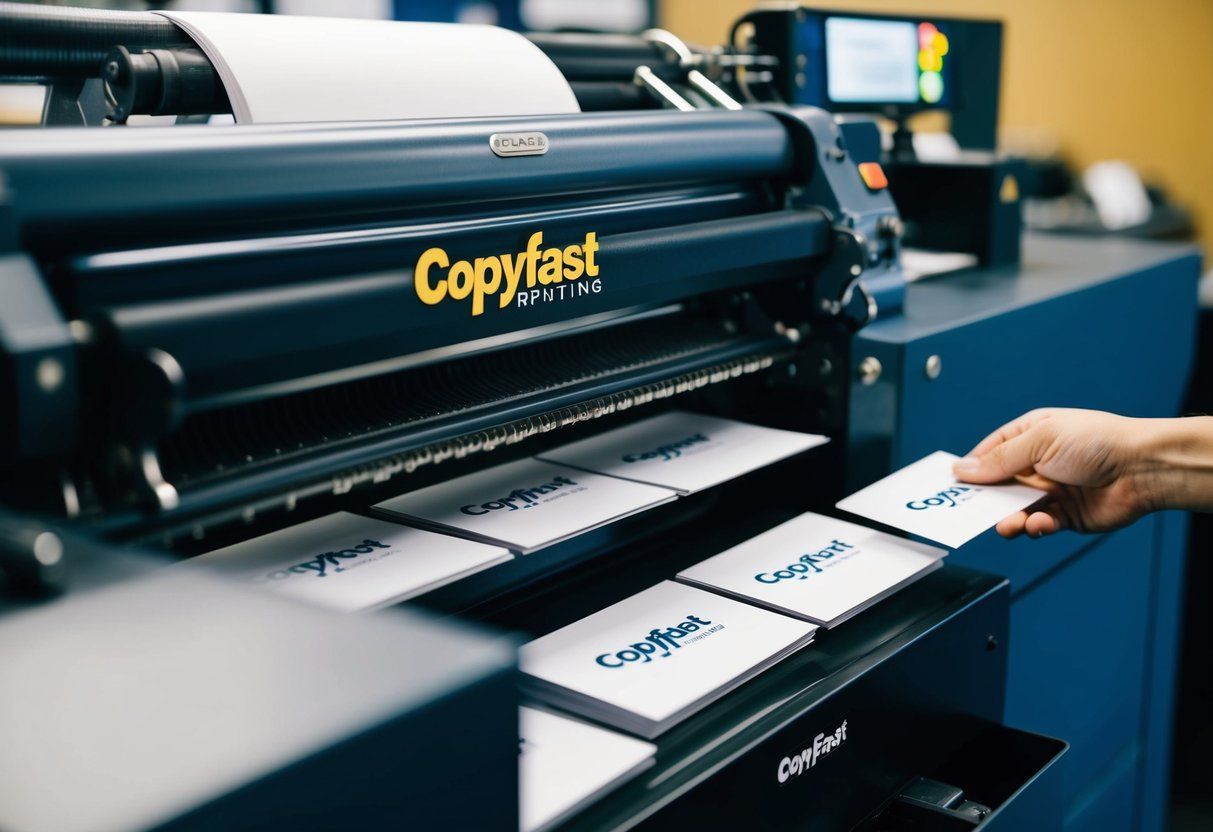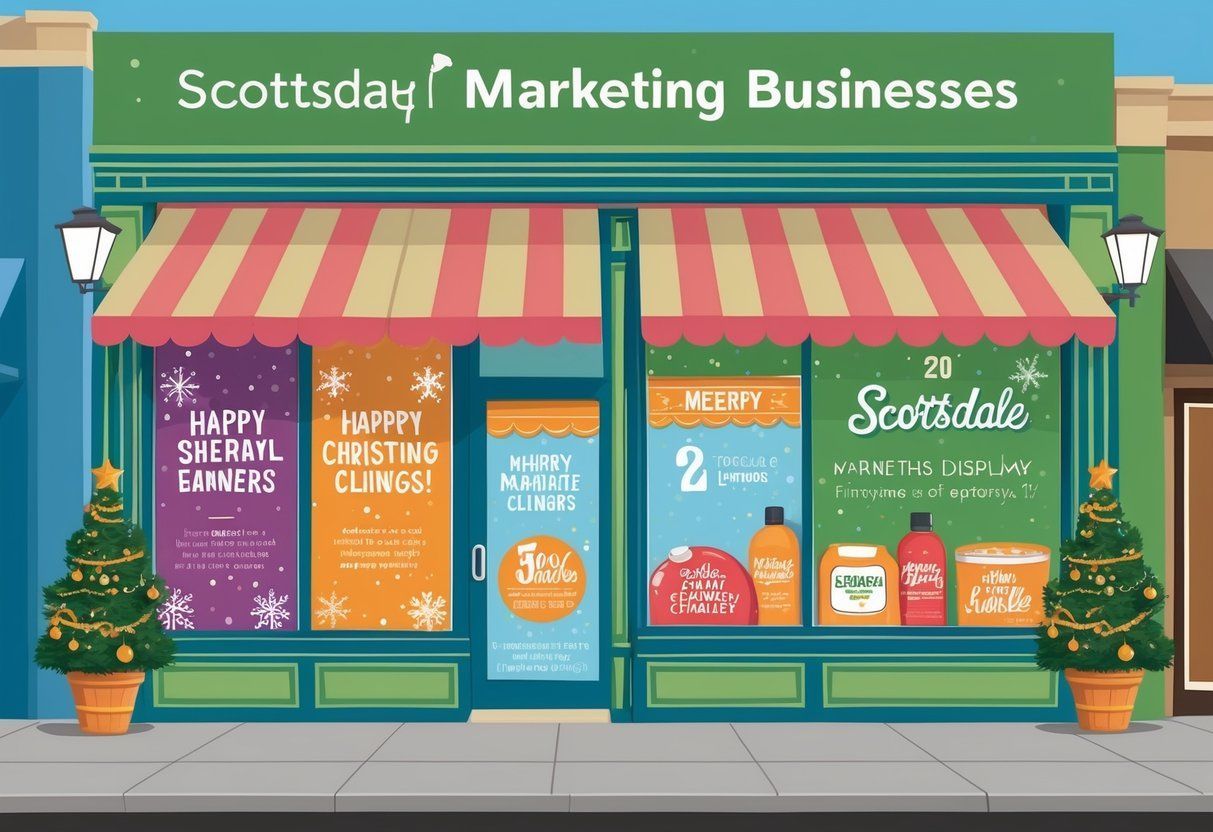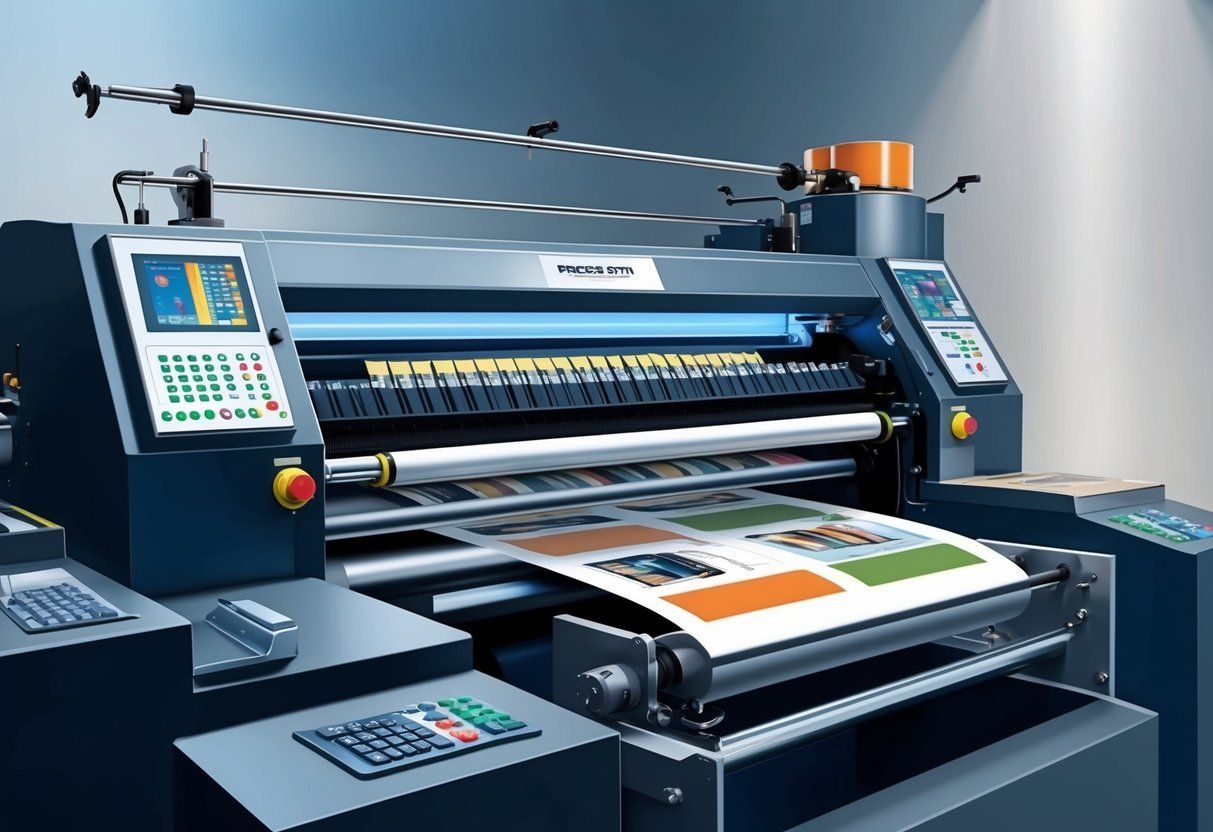Scottsdale Print Shop ) Mesa Print Shop ) Tempe Print Shop ) Phoenix Print Shop ) DC Ranch Print Shop ) Chandler Print Shop ) Peoria Print Shop ) Fountain Hills Print Shop ) Sun City Print Shop ) Glendale Print Shop ) Paradise Valley Print Shop ) Goodyear Print Shop ) Queen Creek Print Shop ) Avondale Print Shop ) Desert Ridge Print Shop ) Apache Junction Print Shop ) North Scottsdale Print Shop ) Pinnacle Peak Print Shop ) Grayawk Print Shop ) Kierland Print Shop ) Windsong Print Shop ) Mcdowell Mountain Ranch Print Shop ) Gainey Ranch Print Shop ) McCormick Ranch Print Shop ) Deer Valley Print Shop ) Arcadia Print Shop ) Troon Print Shop ) Silverleaf Print Shop ) Cave Creek Print Shop ) Old Town Print Shop ) South Scottsdale Print Shop ) Ancala Print Shop ) Central Phoenix Print Shop ) Carefree Print Shop ) Toleson Print Shop ) Ironwood Village Print Shop ) WIndgate Ranch Print Shop ) Northsight Print Shop ) Shea Print Shop ) Tatum Ranch Print Shop ) Casa Grande Print Shop ) Gilbert Print Shop ) Suprise Print Shop ) Buckeye Print Shop ) Scottsdale Banner Printing ) Mesa Banner Printing ) Tempe Banner Printing ) Phoenix Banner Printing ) DC Ranch Banner Printing ) Chandler Banner Printing ) Peoria Banner Printing ) Fountain Hills Banner Printing ) Sun City Banner Printing ) Glendale Banner Printing ) Paradise Valley Banner Printing ) Goodyear Banner Printing ) Queen Creek Banner Printing ) Avondale Banner Printing ) Desert Ridge Banner Printing ) Apache Junction Banner Printing ) North Scottsdale Banner Printing ) Pinnacle Peak Banner Printing ) Grayawk Banner Printing ) Kierland Banner Printing ) Windsong Banner Printing ) Mcdowell Mountain Ranch Banner Printing ) Gainey Ranch Banner Printing ) McCormick Ranch Banner Printing ) Deer Valley Banner Printing ) Arcadia Banner Printing ) Troon Banner Printing ) Silverleaf Banner Printing ) Cave Creek Banner Printing ) Old Town Banner Printing ) South Scottsdale Banner Printing ) Ancala Banner Printing ) Central Phoenix Banner Printing ) Carefree Banner Printing ) Toleson Banner Printing ) Ironwood Village Banner Printing ) WIndgate Ranch Banner Printing ) Northsight Banner Printing ) Shea Banner Printing ) Tatum Ranch Banner Printing ) Casa Grande Banner Printing ) Gilbert Banner Printing ) Suprise Banner Printing ) Buckeye Banner Printing ) Scottsdale Book Binding ) Mesa Book Binding ) Tempe Book Binding ) Phoenix Book Binding ) DC Ranch Book Binding ) Chandler Book Binding ) Peoria Book Binding ) Fountain Hills Book Binding ) Sun City Book Binding ) Glendale Book Binding ) Paradise Valley Book Binding ) Goodyear Book Binding ) Queen Creek Book Binding ) Avondale Book Binding ) Desert Ridge Book Binding ) Apache Junction Book Binding ) North Scottsdale Book Binding ) Pinnacle Peak Book Binding ) Grayawk Book Binding ) Kierland Book Binding ) Windsong Book Binding ) Mcdowell Mountain Ranch Book Binding ) Gainey Ranch Book Binding ) McCormick Ranch Book Binding ) Deer Valley Book Binding ) Arcadia Book Binding ) Troon Book Binding ) Silverleaf Book Binding ) Cave Creek Book Binding ) Old Town Book Binding ) South Scottsdale Book Binding ) Ancala Book Binding ) Central Phoenix Book Binding ) Carefree Book Binding ) Toleson Book Binding ) Ironwood Village Book Binding ) WIndgate Ranch Book Binding ) Northsight Book Binding ) Shea Book Binding ) Tatum Ranch Book Binding ) Casa Grande Book Binding ) Gilbert Book Binding ) Suprise Book Binding ) Buckeye Book Binding ) Scottsdale Booklet Printing ) Mesa Booklet Printing ) Tempe Booklet Printing ) Phoenix Booklet Printing ) DC Ranch Booklet Printing ) Chandler Booklet Printing ) Peoria Booklet Printing ) Fountain Hills Booklet Printing ) Sun City Booklet Printing ) Glendale Booklet Printing ) Paradise Valley Booklet Printing ) Goodyear Booklet Printing ) Queen Creek Booklet Printing ) Avondale Booklet Printing ) Desert Ridge Booklet Printing ) Apache Junction Booklet Printing ) North Scottsdale Booklet Printing ) Pinnacle Peak Booklet Printing ) Grayawk Booklet Printing ) Kierland Booklet Printing ) Windsong Booklet Printing ) Mcdowell Mountain Ranch Booklet Printing ) Gainey Ranch Booklet Printing ) McCormick Ranch Booklet Printing ) Deer Valley Booklet Printing ) Arcadia Booklet Printing ) Troon Booklet Printing ) Silverleaf Booklet Printing ) Cave Creek Booklet Printing ) Old Town Booklet Printing ) South Scottsdale Booklet Printing ) Ancala Booklet Printing ) Central Phoenix Booklet Printing ) Carefree Booklet Printing ) Toleson Booklet Printing ) Ironwood Village Booklet Printing ) WIndgate Ranch Booklet Printing ) Northsight Booklet Printing ) Shea Booklet Printing ) Tatum Ranch Booklet Printing ) Casa Grande Booklet Printing ) Gilbert Booklet Printing ) Suprise Booklet Printing ) Buckeye Booklet Printing ) Scottsdale Brochure Printing ) Mesa Brochure Printing ) Tempe Brochure Printing ) Phoenix Brochure Printing ) DC Ranch Brochure Printing ) Chandler Brochure Printing ) Peoria Brochure Printing ) Fountain Hills Brochure Printing ) Sun City Brochure Printing ) Glendale Brochure Printing ) Paradise Valley Brochure Printing ) Goodyear Brochure Printing ) Queen Creek Brochure Printing ) Avondale Brochure Printing ) Desert Ridge Brochure Printing ) Apache Junction Brochure Printing ) North Scottsdale Brochure Printing ) Pinnacle Peak Brochure Printing ) Grayawk Brochure Printing ) Kierland Brochure Printing ) Windsong Brochure Printing ) Mcdowell Mountain Ranch Brochure Printing ) Gainey Ranch Brochure Printing ) McCormick Ranch Brochure Printing ) Deer Valley Brochure Printing ) Arcadia Brochure Printing ) Troon Brochure Printing ) Silverleaf Brochure Printing ) Cave Creek Brochure Printing ) Old Town Brochure Printing ) South Scottsdale Brochure Printing ) Ancala Brochure Printing ) Central Phoenix Brochure Printing ) Carefree Brochure Printing ) Toleson Brochure Printing ) Ironwood Village Brochure Printing ) WIndgate Ranch Brochure Printing ) Northsight Brochure Printing ) Shea Brochure Printing ) Tatum Ranch Brochure Printing ) Casa Grande Brochure Printing ) Gilbert Brochure Printing ) Suprise Brochure Printing ) Buckeye Brochure Printing ) Scottsdale Business Card Printing ) Mesa Business Card Printing ) Tempe Business Card Printing ) Phoenix Business Card Printing ) DC Ranch Business Card Printing ) Chandler Business Card Printing ) Peoria Business Card Printing ) Fountain Hills Business Card Printing ) Sun City Business Card Printing ) Glendale Business Card Printing ) Paradise Valley Business Card Printing ) Goodyear Business Card Printing ) Queen Creek Business Card Printing ) Avondale Business Card Printing ) Desert Ridge Business Card Printing ) Apache Junction Business Card Printing ) North Scottsdale Business Card Printing ) Pinnacle Peak Business Card Printing ) Grayawk Business Card Printing ) Kierland Business Card Printing ) Windsong Business Card Printing ) Mcdowell Mountain Ranch Business Card Printing ) Gainey Ranch Business Card Printing ) McCormick Ranch Business Card Printing ) Deer Valley Business Card Printing ) Arcadia Business Card Printing ) Troon Business Card Printing ) Silverleaf Business Card Printing ) Cave Creek Business Card Printing ) Old Town Business Card Printing ) South Scottsdale Business Card Printing ) Ancala Business Card Printing ) Central Phoenix Business Card Printing ) Carefree Business Card Printing ) Toleson Business Card Printing ) Ironwood Village Business Card Printing ) WIndgate Ranch Business Card Printing ) Northsight Business Card Printing ) Shea Business Card Printing ) Tatum Ranch Business Card Printing ) Casa Grande Business Card Printing ) Gilbert Business Card Printing ) Suprise Business Card Printing ) Buckeye Business Card Printing ) Scottsdale Catalog Printing ) Mesa Catalog Printing ) Tempe Catalog Printing ) Phoenix Catalog Printing ) DC Ranch Catalog Printing ) Chandler Catalog Printing ) Peoria Catalog Printing ) Fountain Hills Catalog Printing ) Sun City Catalog Printing ) Glendale Catalog Printing ) Paradise Valley Catalog Printing ) Goodyear Catalog Printing ) Queen Creek Catalog Printing ) Avondale Catalog Printing ) Desert Ridge Catalog Printing ) Apache Junction Catalog Printing ) North Scottsdale Catalog Printing ) Pinnacle Peak Catalog Printing ) Grayawk Catalog Printing ) Kierland Catalog Printing ) Windsong Catalog Printing ) Mcdowell Mountain Ranch Catalog Printing ) Gainey Ranch Catalog Printing ) McCormick Ranch Catalog Printing ) Deer Valley Catalog Printing ) Arcadia Catalog Printing ) Troon Catalog Printing ) Silverleaf Catalog Printing ) Cave Creek Catalog Printing ) Old Town Catalog Printing ) South Scottsdale Catalog Printing ) Ancala Catalog Printing ) Central Phoenix Catalog Printing ) Carefree Catalog Printing ) Toleson Catalog Printing ) Ironwood Village Catalog Printing ) WIndgate Ranch Catalog Printing ) Northsight Catalog Printing ) Shea Catalog Printing ) Tatum Ranch Catalog Printing ) Casa Grande Catalog Printing ) Gilbert Catalog Printing ) Suprise Catalog Printing ) Buckeye Catalog Printing ) Scottsdale Commercial Printing ) Mesa Commercial Printing ) Tempe Commercial Printing ) Phoenix Commercial Printing ) DC Ranch Commercial Printing ) Chandler Commercial Printing ) Peoria Commercial Printing ) Fountain Hills Commercial Printing ) Sun City Commercial Printing ) Glendale Commercial Printing ) Paradise Valley Commercial Printing ) Goodyear Commercial Printing ) Queen Creek Commercial Printing ) Avondale Commercial Printing ) Desert Ridge Commercial Printing ) Apache Junction Commercial Printing ) North Scottsdale Commercial Printing ) Pinnacle Peak Commercial Printing ) Grayawk Commercial Printing ) Kierland Commercial Printing ) Windsong Commercial Printing ) Mcdowell Mountain Ranch Commercial Printing ) Gainey Ranch Commercial Printing ) McCormick Ranch Commercial Printing ) Deer Valley Commercial Printing ) Arcadia Commercial Printing ) Troon Commercial Printing ) Silverleaf Commercial Printing ) Cave Creek Commercial Printing ) Old Town Commercial Printing ) South Scottsdale Commercial Printing ) Ancala Commercial Printing ) Central Phoenix Commercial Printing ) Carefree Commercial Printing ) Toleson Commercial Printing ) Ironwood Village Commercial Printing ) WIndgate Ranch Commercial Printing ) Northsight Commercial Printing ) Shea Commercial Printing ) Tatum Ranch Commercial Printing ) Casa Grande Commercial Printing ) Gilbert Commercial Printing ) Suprise Commercial Printing ) Buckeye Commercial Printing ) Scottsdale Coroplast Signs ) Mesa Coroplast Signs ) Tempe Coroplast Signs ) Phoenix Coroplast Signs ) Scottsdale Digital Printing ) Mesa Digital Printing ) Tempe Digital Printing ) Phoenix Digital Printing ) DC Ranch Digital Printing ) Chandler Digital Printing ) Peoria Digital Printing ) Fountain Hills Digital Printing ) Sun City Digital Printing ) Glendale Digital Printing ) Paradise Valley Digital Printing ) Goodyear Digital Printing ) Queen Creek Digital Printing ) Avondale Digital Printing ) Desert Ridge Digital Printing ) Apache Junction Digital Printing ) North Scottsdale Digital Printing ) Pinnacle Peak Digital Printing ) Grayawk Digital Printing ) Kierland Digital Printing ) Windsong Digital Printing ) Mcdowell Mountain Ranch Digital Printing ) Gainey Ranch Digital Printing ) McCormick Ranch Digital Printing ) Deer Valley Digital Printing ) Arcadia Digital Printing ) Troon Digital Printing ) Silverleaf Digital Printing ) Cave Creek Digital Printing ) Old Town Digital Printing ) South Scottsdale Digital Printing ) Ancala Digital Printing ) Central Phoenix Digital Printing ) Carefree Digital Printing ) Toleson Digital Printing ) Ironwood Village Digital Printing ) WIndgate Ranch Digital Printing ) Northsight Digital Printing ) Shea Digital Printing ) Tatum Ranch Digital Printing ) Casa Grande Digital Printing ) Gilbert Digital Printing ) Suprise Digital Printing ) Buckeye Digital Printing ) Scottsdale Direct Mailing Services ) Mesa Direct Mailing Services ) Tempe Direct Mailing Services ) Phoenix Direct Mailing Services ) DC Ranch Direct Mailing Services ) Chandler Direct Mailing Services ) Peoria Direct Mailing Services ) Fountain Hills Direct Mailing Services ) Sun City Direct Mailing Services ) Glendale Direct Mailing Services ) Paradise Valley Direct Mailing Services ) Goodyear Direct Mailing Services ) Queen Creek Direct Mailing Services ) Avondale Direct Mailing Services ) Desert Ridge Direct Mailing Services ) Apache Junction Direct Mailing Services ) North Scottsdale Direct Mailing Services ) Pinnacle Peak Direct Mailing Services ) Grayawk Direct Mailing Services ) Kierland Direct Mailing Services ) Windsong Direct Mailing Services ) Mcdowell Mountain Ranch Direct Mailing Services ) Gainey Ranch Direct Mailing Services ) McCormick Ranch Direct Mailing Services ) Deer Valley Direct Mailing Services ) Arcadia Direct Mailing Services ) Troon Direct Mailing Services ) Silverleaf Direct Mailing Services ) Cave Creek Direct Mailing Services ) Old Town Direct Mailing Services ) South Scottsdale Direct Mailing Services ) Ancala Direct Mailing Services ) Central Phoenix Direct Mailing Services ) Carefree Direct Mailing Services ) Toleson Direct Mailing Services ) Ironwood Village Direct Mailing Services ) WIndgate Ranch Direct Mailing Services ) Northsight Direct Mailing Services ) Shea Direct Mailing Services ) Tatum Ranch Direct Mailing Services ) Casa Grande Direct Mailing Services ) Gilbert Direct Mailing Services ) Suprise Direct Mailing Services ) Buckeye Direct Mailing Services ) Scottsdale Flyer Printing ) Mesa Flyer Printing ) Tempe Flyer Printing ) Phoenix Flyer Printing ) DC Ranch Flyer Printing ) Chandler Flyer Printing ) Peoria Flyer Printing ) Fountain Hills Flyer Printing ) Sun City Flyer Printing ) Glendale Flyer Printing ) Paradise Valley Flyer Printing ) Goodyear Flyer Printing ) Queen Creek Flyer Printing ) Avondale Flyer Printing ) Desert Ridge Flyer Printing ) Apache Junction Flyer Printing ) North Scottsdale Flyer Printing ) Pinnacle Peak Flyer Printing ) Grayawk Flyer Printing ) Kierland Flyer Printing ) Windsong Flyer Printing ) Mcdowell Mountain Ranch Flyer Printing ) Gainey Ranch Flyer Printing ) McCormick Ranch Flyer Printing ) Deer Valley Flyer Printing ) Arcadia Flyer Printing ) Troon Flyer Printing ) Silverleaf Flyer Printing ) Cave Creek Flyer Printing ) Old Town Flyer Printing ) South Scottsdale Flyer Printing ) Ancala Flyer Printing ) Central Phoenix Flyer Printing ) Carefree Flyer Printing ) Toleson Flyer Printing ) Ironwood Village Flyer Printing ) WIndgate Ranch Flyer Printing ) Northsight Flyer Printing ) Shea Flyer Printing ) Tatum Ranch Flyer Printing ) Casa Grande Flyer Printing ) Gilbert Flyer Printing ) Suprise Flyer Printing ) Buckeye Flyer Printing ) Scottsdale Graphic Design ) Mesa Graphic Design ) Tempe Graphic Design ) Phoenix Graphic Design ) DC Ranch Graphic Design ) Chandler Graphic Design ) Peoria Graphic Design ) Fountain Hills Graphic Design ) Sun City Graphic Design ) Glendale Graphic Design ) Paradise Valley Graphic Design ) Goodyear Graphic Design ) Queen Creek Graphic Design ) Avondale Graphic Design ) Desert Ridge Graphic Design ) Apache Junction Graphic Design ) North Scottsdale Graphic Design ) Pinnacle Peak Graphic Design ) Grayawk Graphic Design ) Kierland Graphic Design ) Windsong Graphic Design ) Mcdowell Mountain Ranch Graphic Design ) Gainey Ranch Graphic Design ) McCormick Ranch Graphic Design ) Deer Valley Graphic Design ) Arcadia Graphic Design ) Troon Graphic Design ) Silverleaf Graphic Design ) Cave Creek Graphic Design ) Old Town Graphic Design ) South Scottsdale Graphic Design ) Ancala Graphic Design ) Central Phoenix Graphic Design ) Carefree Graphic Design ) Toleson Graphic Design ) Ironwood Village Graphic Design ) WIndgate Ranch Graphic Design ) Northsight Graphic Design ) Shea Graphic Design ) Tatum Ranch Graphic Design ) Casa Grande Graphic Design ) Gilbert Graphic Design ) Suprise Graphic Design ) Buckeye Graphic Design ) Scottsdale Large Format Printing ) Mesa Large Format Printing ) Tempe Large Format Printing ) Phoenix Large Format Printing ) DC Ranch Large Format Printing ) Chandler Large Format Printing ) Peoria Large Format Printing ) Fountain Hills Large Format Printing ) Sun City Large Format Printing ) Glendale Large Format Printing ) Paradise Valley Large Format Printing ) Goodyear Large Format Printing ) Peoria Postcard Printing ) Fountain Hills Postcard Printing ) Sun City Postcard Printing ) Glendale Postcard Printing ) Paradise Valley Postcard Printing ) Goodyear Postcard Printing ) Queen Creek Postcard Printing ) Avondale Postcard Printing ) Desert Ridge Postcard Printing ) Apache Junction Postcard Printing ) North Scottsdale Postcard Printing ) Pinnacle Peak Postcard Printing ) Grayawk Postcard Printing ) Kierland Postcard Printing ) Windsong Postcard Printing ) Mcdowell Mountain Ranch Postcard Printing ) Gainey Ranch Postcard Printing ) McCormick Ranch Postcard Printing ) Deer Valley Postcard Printing ) Arcadia Postcard Printing ) Troon Postcard Printing ) Silverleaf Postcard Printing ) Cave Creek Postcard Printing ) Old Town Postcard Printing ) South Scottsdale Postcard Printing ) Ancala Postcard Printing ) Central Phoenix Postcard Printing ) Carefree Postcard Printing ) Toleson Postcard Printing ) Ironwood Village Postcard Printing ) WIndgate Ranch Postcard Printing ) Northsight Postcard Printing ) Shea Postcard Printing ) Tatum Ranch Postcard Printing ) Casa Grande Postcard Printing ) Gilbert Postcard Printing ) Suprise Postcard Printing ) Buckeye Postcard Printing ) Scottsdale Poster Printing ) Mesa Poster Printing ) Tempe Poster Printing ) Phoenix Poster Printing ) DC Ranch Poster Printing ) Chandler Poster Printing ) Peoria Poster Printing ) Fountain Hills Poster Printing ) Sun City Poster Printing ) Glendale Poster Printing ) Paradise Valley Poster Printing ) Goodyear Poster Printing ) Queen Creek Poster Printing ) Avondale Poster Printing ) Desert Ridge Poster Printing ) Apache Junction Poster Printing ) North Scottsdale Poster Printing ) Pinnacle Peak Poster Printing ) Grayawk Poster Printing ) Kierland Poster Printing ) Windsong Poster Printing ) Mcdowell Mountain Ranch Poster Printing ) Gainey Ranch Poster Printing ) McCormick Ranch Poster Printing ) Deer Valley Poster Printing ) Arcadia Poster Printing ) Troon Poster Printing ) Silverleaf Poster Printing ) Cave Creek Poster Printing ) Old Town Poster Printing ) South Scottsdale Poster Printing ) Ancala Poster Printing ) Central Phoenix Poster Printing ) Carefree Poster Printing ) Toleson Poster Printing ) Ironwood Village Poster Printing ) WIndgate Ranch Poster Printing ) Northsight Poster Printing ) Shea Poster Printing ) Tatum Ranch Poster Printing ) Casa Grande Poster Printing ) Gilbert Poster Printing ) Suprise Poster Printing ) Buckeye Poster Printing ) Scottsdale Promotional Items Printing )
Direct Mail Strategies: Enhancing Your Marketing Campaigns
Direct mail is a marketing strategy that involves sending physical promotional materials to a targeted group of consumers or businesses. As a traditional form of advertising, it encompasses a range of mediums including catalogs, brochures, postcards, and newsletters. The purpose of direct mail is to persuade recipients to take a specific action such as making a purchase, donating to a cause, or attending an event.

This approach allows marketers to personalize messages and offers, which can increase the likelihood of engagement. Additionally, direct mail can be easily tracked and measured, giving businesses valuable insights into the effectiveness of their campaigns. As such, it remains a relevant tactic in the digital age, complementing online marketing efforts and reaching audiences in a tangible, memorable way.
Key Takeaways
- Direct mail involves personalized, physical marketing materials delivered to a specific audience.
- It allows for easy tracking and measuring of campaign success, providing valuable insights.
- Despite digital advancements, direct mail remains an effective complement to online marketing efforts.
Direct Mail Fundamentals
Direct Mail is a marketing strategy that involves sending physical promotional material through the postal service to a targeted audience. This tactile form of marketing is used to increase brand awareness and prompt a response from the recipient.
Understanding Direct Mail
Direct mail encompasses a variety of mailed items such as postcards , flyers , letters , catalogs , and brochures . It leverages the postal system to deliver marketing messages directly to a target audience. Each mailer is usually designed with a specific intention, from introducing a product to driving traffic to a website or physical store.
Types of Direct Mail
There are several common types of direct mail pieces, each serving a unique purpose in a marketing campaign:
- Postcards : Often used for promotions, announcements, or as reminders.
- Flyers : Ideal for quick reads, offering brief information about events or services.
- Letters : Provide a personal touch, typically for detailed communication.
- Catalogs : Showcase a variety of products for the recipient to browse.
- Brochures : Condense important product or company information into an easy-to-read format.
Benefits of Direct Mail Marketing
Direct mail marketing offers distinct advantages:
- Tangibility : Physical mail stands out and can be kept for future reference.
- Targeted : Marketers can precisely target demographics, leading to improved response rates.
- Measurable : The success of direct mail campaigns can be tracked through responses, coupon redemptions, and other metrics.
- Brand Presence : Regular mailers help maintain brand visibility amongst the target audience.
Strategizing Direct Mail Campaigns
Efficient direct mail campaigns demand meticulous planning, from understanding who will receive the mail to crafting a resonant message complemented by compelling design.
Target Audience Identification
To optimize a direct mail campaign, it is crucial to identify the target audience accurately. Direct mail specialists often employ analytics tools to sift through customer demographics , including age, income, purchasing habits, and zip code data. A table representing different demographics and their corresponding targeted offers could be used:
| Demographic | Targeted Offer |
|---|---|
| Millennial | Tech Gadgets Discount |
| Baby Boomer | Healthcare Products Savings |
| New Homeowners | Home Furniture Promo |
Creating an Effective Message
The message must address the recipient’s needs or interests to maximize the response rate . Clear, compelling content with a decisive call to action is non-negotiable. It might follow this structure:
- Address the recipient by name
- Highlight the special offer or product feature
- Present the call to action with urgency
For instance , “Sarah, enhance your summer with a premium garden set at a 20% discount! Act now—offer ends soon.”
Designing Your Direct Mail
Direct mail design plays a vital role in capturing attention and conveying the message. Design elements should be on-brand, visually appealing, and align with message content. The layout needs to direct the eye towards key information, especially the call to action . Utilization of whitespace, bold headings, and imagery can enhance readability and add impact. The design should always be relevant to the target audience and message:
- Use bold colors and playful fonts for younger demographics
- Choose clear, large text and soothing colors for older demographics
Execution of Direct Mail
Direct mail is a tangible form of advertising that enables businesses to reach targeted audiences by delivering physical promotional materials. Execution involves meticulous planning and understanding of postal regulations to ensure the delivery of mail pieces effectively and efficiently.
Production and Printing
The process begins with the production and printing of direct mail pieces. Selection of a printer is crucial as it impacts the quality and cost-effectiveness of the campaign. It is important to consider postage rates during design since the size and weight of mailers influence the cost. Companies often utilize specialized software to aid in the design before sending the files for printing. Opting for bulk printing services can result in lower costs.
| Consideration | Detail |
|---|---|
| Quality | High-resolution printing and durable materials |
| Cost | Competitive rates and bulk printing discounts |
| Postal Requirements | Compliance with USPS size and weight regulations |
Postal Services and EDDM
After printing, businesses must navigate postal services and options such as Every Door Direct Mail (EDDM) . This USPS Marketing Mail service allows for sending mailers without individual addresses, relying on postal routes to ensure delivery. For smaller operations, EDDM Retail provides a simplified process, allowing them to send up to 5,000 pieces per day at each post office. Understanding the nuances of this service is essential to maximize reach while controlling costs.
Distribution and Shipping
The final step is distribution and shipping . Options like Priority Mail offer faster delivery at a premium, while other postage options may balance cost and speed. Logistics become critical here; schedules should align with marketing campaigns for timely delivery. It’s important for businesses to work closely with the post office to confirm mailing dates and avoid delays.
When dealing with large volumes, businesses frequently establish ongoing relationships with mail carriers to optimize shipping rates and reliability. Moreover, safe packaging methods to protect the mailers during transit are also a part of the shipping considerations.
Evaluating Direct Mail Success
When measuring the success of direct mail campaigns, key performance indicators such as response rates and ROI must be carefully monitored. Tracking tools and thoughtful analysis play pivotal roles in improving future campaigns.
Tracking Response Rates
Companies utilize unique tracking codes and phone numbers to monitor the number of responses received from a direct mail campaign. By comparing the number of responses to the total amount of mail sent, they calculate the response rate . This metric is essential for assessing the initial engagement of a campaign.
- Tracking Methods:
- Personalized URLs (PURLs)
- QR codes
- Unique phone numbers
- Promo codes
ROI and Performance Metrics
The return on investment (ROI) is a vital performance metric that evaluates the financial effectiveness of a direct mail campaign. Mail service providers often offer analytics to track key statistics, including not just response rates, but also the number of recipients who converted into customers.
Tools for Measuring ROI:
- Cost Analysis: Compare the total cost of the campaign to sales generated.
- Conversion Tracking: Use analytics to track the customer journey from receipt to conversion.
- Benchmarking: Against previous campaigns or industry standards.
Improving Future Campaigns
Data gathered from tracking responses and analyzing ROI is applied to enhance future campaigns. Companies identify which elements resonated with their audience and adjust their strategy accordingly. They consider factors like personalization, design, and offer throughout their analysis to refine their direct mail approach.
- Optimization Strategies:
- A/B testing for different variables
- Segmenting audience lists
- Tailoring the message to recipient interests
By diligently evaluating these aspects of direct mail, companies can incrementally improve their marketing strategy’s efficiency and effectiveness.
Direct Mail Integration
Integrating direct mail with other marketing strategies enhances its effectiveness by creating a cohesive approach across multiple channels.
Combining with Digital Marketing
Integrating direct mail with digital marketing strategies can create a seamless brand experience for customers. Marketers may use a mail service provider to send personalized postcards or catalogs that complement email campaigns. With technology, they often employ CRM software to track the effectiveness of this blended approach, ensuring a consistent message is received whether the customer opens a physical mailer or a digital newsletter.
- Email Marketing : Syncing direct mail with email campaigns can result in higher conversion rates.
- Permission : Including a clear opt-in process helps in building a list of engaged recipients.
Targeted Local Marketing
Direct mail is particularly effective for local business outreach, as it allows companies to connect with the local community with a personalized touch.
- Customer Demographics : Leveraging detailed demographics enables businesses to send relevant offers to specific local populations.
- B2C and B2B : Both consumer and business-oriented services benefit from targeting local prospects, possibly using offers linked to credit/debit card purchases to track responses.
Leveraging Customer Relationships
For existing customers , direct mail can be a powerful tool to reinforce the relationship. Personalization based on past purchase history or preferences—information often stored in a CRM system—can make customers feel valued. This practice adheres to the importance of permission in B2C communications.
- CRM Data : Use CRM data to customize mail content, thereby enhancing relevance and fostering loyalty.
- Promotions : Exclusive offers for existing customers can encourage repeat business and credit/debit card usage.
Regulatory and Budget Considerations
Effective direct mail campaigns are bounded by regulatory compliance and financial planning. Companies must navigate postal rules and budget constraints to ensure successful delivery and optimized costs.
Postal Regulations and Permissions
The United States Postal Service (USPS) plays a pivotal role in direct mail distribution. Organizations must adhere to USPS regulations when sending out mail. Crucially, businesses should familiarize themselves with the Business Mail Entry Unit (BMEU) – a facility that provides mailing services for large volumes. For Every Door Direct Mail (EDDM) services, the EDDM BMEU is a specific tool used for simplified mail entry for local and small businesses. Using the Business Customer Gateway, companies can manage their mailings, ensuring compliance with USPS requirements.
Key Compliance Points:
- Use correct addressing format as specified by USPS.
- Ensure mail pieces meet size and weight restrictions .
- Mailings should include appropriate postal markings and barcodes when necessary.
Budgeting for Direct Mail
Direct mail campaigns incur expenses that must be factored into any marketing budget. Planning involves determining the scale of the campaign, the type of mail being sent, and the class of mail service used, which directly affects postage costs.
Budgeting Checklist:
- Quantify printing and production costs for mailers.
- Calculate postage expenses by considering mail size, weight, and chosen USPS service level.
- Explore payment options : pre-paid, credit, or other methods available through the USPS.
- Account for potential savings through volume discounts or promotional offers like a coupon code .
Campaign planners should meticulously forecast and provision for these expenditures to maintain financial control and to maximize the potential return on investment from the direct mail initiative.
Unique Opportunities and Challenges

In the landscape of direct mail marketing, businesses face the dual task of capturing attention in a crowded marketplace and adapting to the preferences of a younger demographic, all while leveraging the impact of targeted incentives.
Standing Out Among Competition
Small businesses and B2C business mailers often discover that their catalogs must be exceptionally designed to differentiate from the competition. Exceptional design and tailored content are critical for a business’s mailers to catch the eye amongst a pile of envelopes. According to industry data, visually appealing and personalized mail pieces tend to have a higher retention and response rate.
- Visually Appealing : Includes the use of high-quality images, unique formatting, and color schemes.
- Personalization : Refers to addressing the recipient by name, referencing past purchases, or customizing content based on consumer data.
Engaging Millennials and Gen Z
Engaging Millennials and Gen Z through direct mail presents a distinct set of challenges, as these groups are digitally native and less accustomed to traditional mail. Marketers have found success by integrating digital elements with physical mail, such as QR codes that bridge the mail to digital platforms, therefore providing a seamless omnichannel experience.
- Digital Integration : QR codes, Augmented Reality (AR), and personalized URLs (PURLs).
- Omnichannel Experience : Ensuring a cohesive customer journey across both digital and physical channels.
Coupons and Incentives
Coupons and incentives remain potent tools for B2C business mailers to drive sales and customer loyalty. Research shows that a significant percentage of consumers are more likely to make a purchase when they receive an exclusive offer or discount through the mail. Effective coupon strategies can include:
- Exclusive Offers : Time-sensitive discounts or deals unique to mail recipients.
- Loyalty Rewards : Incentives that encourage repeat business or subscription services.
Small businesses, in particular, are often better poised to create personalized and localized offers, which can be perceived as more genuine and compelling by the recipient.
Frequently Asked Questions
Direct mail marketing remains a powerful tool for businesses aiming to reach specific demographics. The FAQs below offer insights into successful strategies, cost calculation, design principles, EDDM services, premier direct mail companies, and key performance metrics.
What are the most effective strategies for direct mail marketing?
They often include personalization, segmenting the audience, offering incentives, and integrating with digital marketing campaigns. Employing a clear call to action and tracking responses are also crucial for success.
How can businesses calculate the cost of a direct mail campaign?
The cost is typically determined by the volume of mail, design and printing fees, postage rates, and any additional services needed. Businesses need to account for all these variables to establish an accurate budget.
What are the design principles to consider when creating direct mail flyers?
Effective direct mail flyers should have a strong headline, engaging imagery, a clear message, and a compelling call to action. Using high-quality printing and ensuring the design reflects the brand are important factors.
How does Every Door Direct Mail (EDDM) service work?
EDDM allows businesses to send direct mail to specific neighborhoods without the need for addresses. The sender selects postal routes and the USPS delivers the mail to every door along those routes, helping to maximize local reach.
Which companies offer the best direct mail services for businesses?
Companies often recognized for top direct mail services include Vistaprint, Stamps.com, and Moo. They are known for their quality, versatility, and ability to cater to various business needs.
What are the key metrics to evaluate the success of direct mail advertising?
Key metrics include response rate, conversion rate, cost per acquisition, and return on investment. Recording and analyzing these data points can demonstrate the effectiveness of a direct mail campaign and guide future marketings efforts.…





